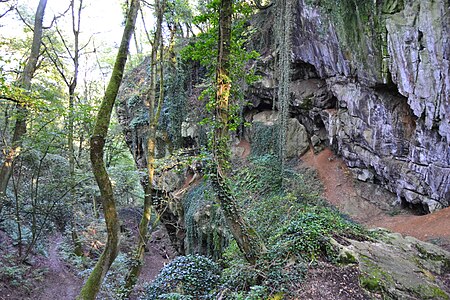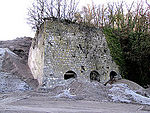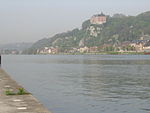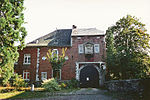Schmerling Caves

The Schmerling Caves (also known as Grottes d'Engis, meaning Engis Caves) are a group of caves located in Wallonia on the right bank of the stream called the Awirs, near the village of Awirs in Flémalle, Belgium. The caves are notable for their past fossil finds, particularly of hominins. They were explored in 1829 by Philippe-Charles Schmerling, who discovered, in the lower cave, the remains of two individuals, one of which, now known as Engis 2, was a fossil of the first Neanderthal ever found; the other was a Neolithic homo sapiens. Also known as Trô Cwaheur or Trou Caheur, this lower cave has since collapsed. A third cave was destroyed because of work on the adjacent quarry, the Ancienne Carrière des Awirs. The caves have been classified on the list of Cultural Heritage of Wallonia sites since 1978, as well as Exceptional Cultural Heritage of Wallonia since 2013, because of the Neanderthal fossil.
Excerpt from the Wikipedia article Schmerling Caves (License: CC BY-SA 3.0, Authors, Images).Schmerling Caves
Rue des Awirs,
Geographical coordinates (GPS) Address External links Nearby Places Show on map
Geographical coordinates (GPS)
| Latitude | Longitude |
|---|---|
| N 50.592222 ° | E 5.408889 ° |
Address
Grottes Schmerling (Grotte Schmerling)
Rue des Awirs
4400
Liège, Belgium
Open on Google Maps










